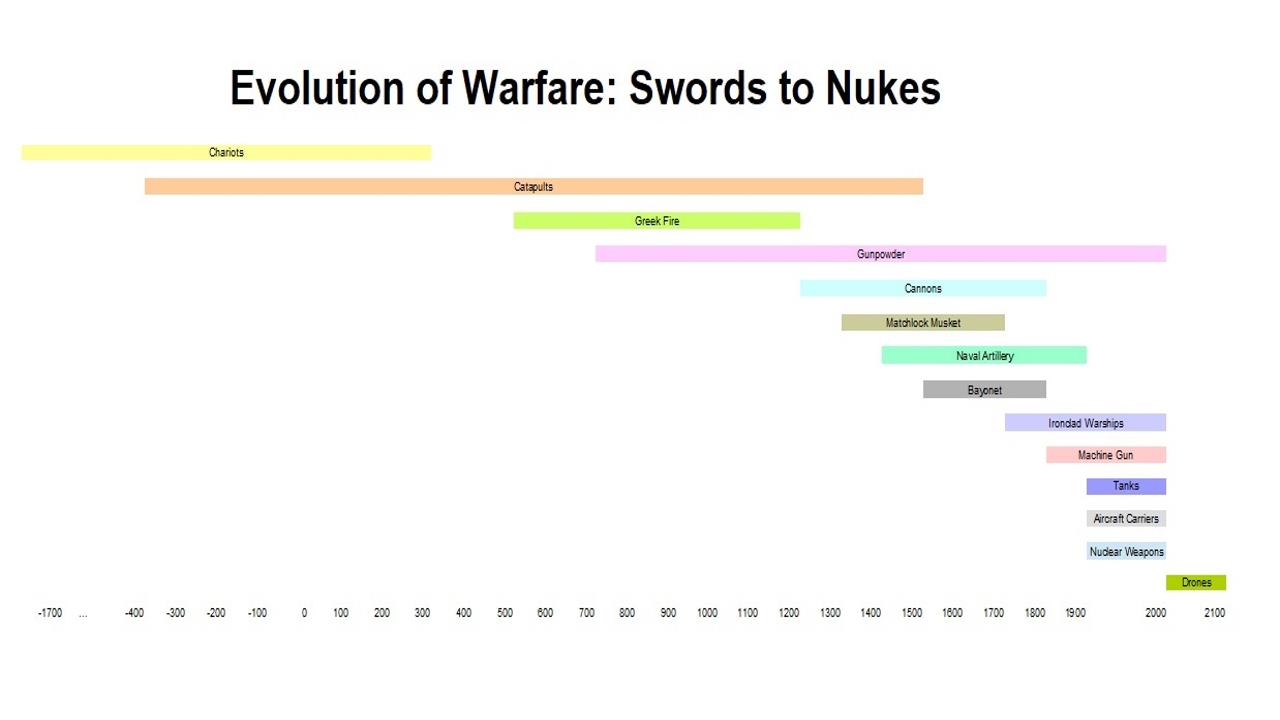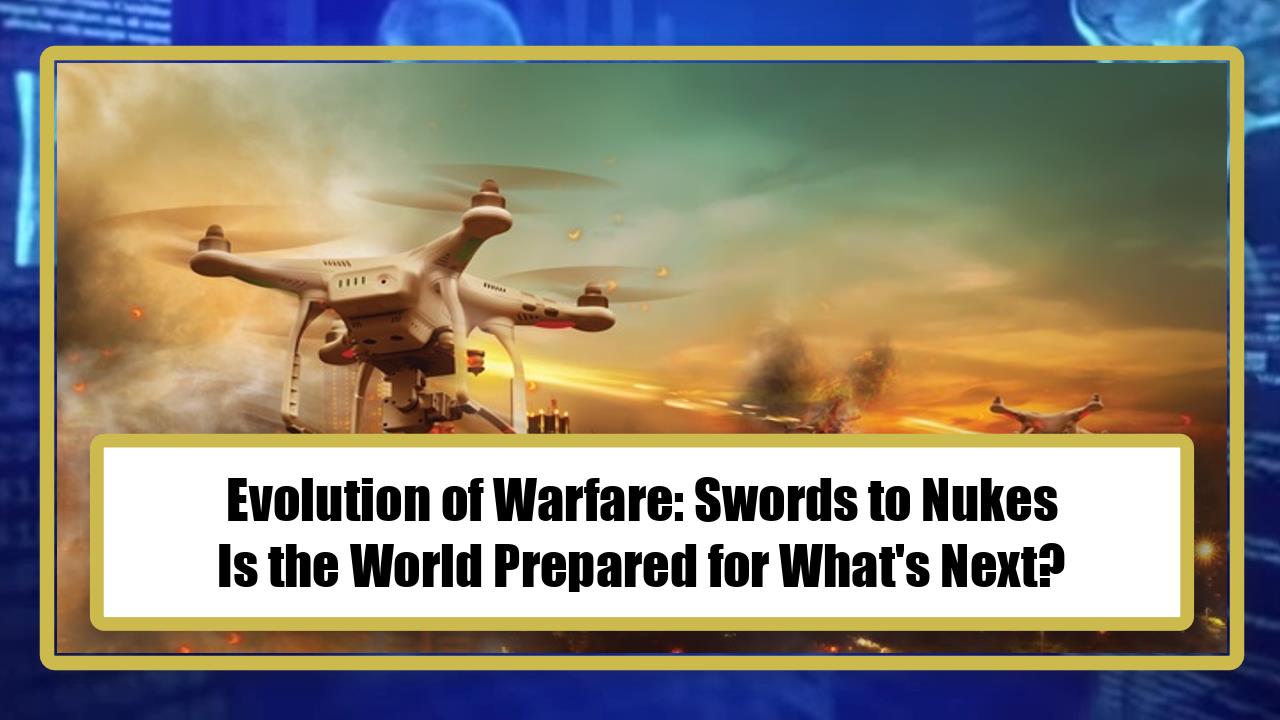Video:
Take our online poll:
AI Analysis:
Top 15 Past War Inventions
Listing the top 15 war inventions that changed the world is subjective, as different people may prioritize inventions differently. However, here's a selection of significant war inventions spanning from 1500 BCE to the present:
1) Chariots (circa 1700 BCE): Revolutionized ancient warfare, providing a fast and maneuverable platform for archers and spearmen.
2) Catapults (circa 399 BCE): Ancient siege engines used to hurl projectiles, such as stones or arrows, at enemy fortifications.
3) Greek Fire (7th century): Byzantine incendiary weapon that could burn on water, used in naval warfare.
4) Gunpowder (9th century):Chinese invention that revolutionized warfare, leading to the development of cannons and firearms.
5) Longbow (12th century): Powerful bow used by English archers, particularly during the Hundred Years' War, with great impact on medieval battles.
6) Cannons (14th century): Early artillery pieces that played a pivotal role in siege warfare and later evolved into more advanced artillery.
7) Matchlock Musket (circa 15th century): Early firearm with a locking mechanism, changing the nature of infantry tactics.
8) Naval Artillery (16th century): Introduction of ship-mounted cannons transformed naval warfare during the Age of Exploration.
9) Bayonet (17th century): Blade attachment for muskets, allowing infantry to switch between firearms and close combat without changing weapons.
10) Ironclad Warships (19th century): Steam-powered and armored ships revolutionized naval warfare during the American Civil War.
11) Machine Gun (late 19th century): Rapid-fire weapons like the Gatling gun and later the Maxim gun had a profound impact on infantry tactics.
12) Tanks (World War I): Armored, tracked vehicles that significantly impacted ground warfare by breaking through trench lines.
13) Aircraft Carriers (World War II): Revolutionized naval warfare by allowing for the projection of air power over long distances.
14) Nuclear Weapons (1940s): The development of atomic bombs changed the strategic landscape and influenced global geopolitics.
15) Drones (21st century): Unmanned aerial vehicles (UAVs) transformed reconnaissance and warfare by enabling remote operations.
This list highlights some key inventions that had a significant impact on the evolution of warfare, but it's essential to recognize that warfare is multifaceted, and technological advancements are interconnected with broader historical, social, and political contexts.
Top 15 Potential Future War Inventions
While I cannot predict the future with certainty, several trends in military technology suggest potential areas for innovation in war inventions. Speculations on future war inventions could include:
1) Advanced Cyber Weapons: Cyber warfare tools and technologies for disrupting enemy networks and systems.
2) Autonomous and Swarm Warfare: Development of autonomous drones and swarming technologies for coordinated military operations.
3) Directed Energy Weapons: Advancements in laser and microwave technologies for high-energy directed weapons.
4) Biotechnological Warfare: Research into biotechnological advancements, including genetically modified organisms for military purposes.
5) Quantum Technologies: Integration of quantum computing and communication for secure and advanced military applications.
6) Enhanced Soldier Technologies: Augmented reality, exoskeletons, and advanced wearable technologies for soldiers.
7) Hypersonic Weapons: Development of hypersonic missiles and aircraft for rapid and unpredictable strikes.
8) Space-based Defense Systems: Implementation of space-based technologies for defense and surveillance purposes.
9) Artificial Intelligence in Warfare: Increased utilization of AI for decision-making, autonomous vehicles, and predictive analysis.
10) Advanced Materials: Development of lightweight and durable materials for military equipment and vehicles.
11) Railguns and Electromagnetic Weapons: Advancements in electromagnetic technologies for more efficient and powerful weapons.
12) Underwater Drones: Expansion of underwater drone technologies for naval reconnaissance and warfare.
13) Non-Lethal Weapons: Research into non-lethal technologies for crowd control and strategic intervention.
14) Biometric Warfare: Use of biometric data for identification and targeting in military operations.
15) Space Warfare Technologies: Possibilities of technology for space-based defense systems and anti-satellite capabilities.
It's important to approach these speculations with caution, considering ethical implications, international agreements, and potential societal impacts. The development and deployment of military technologies are subject to various factors, including geopolitical considerations, scientific advancements, and international regulations.
Chart:

References:


Comments